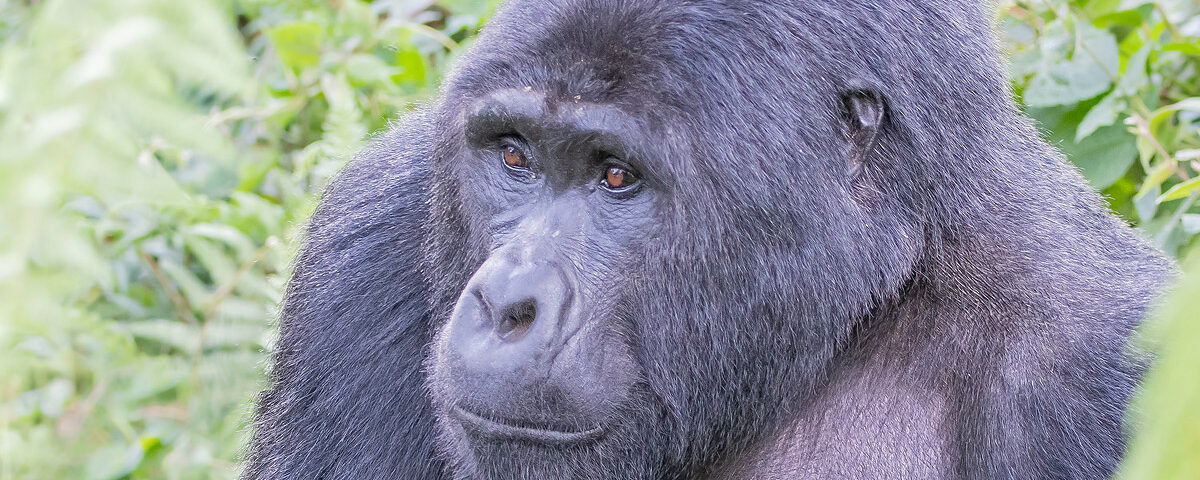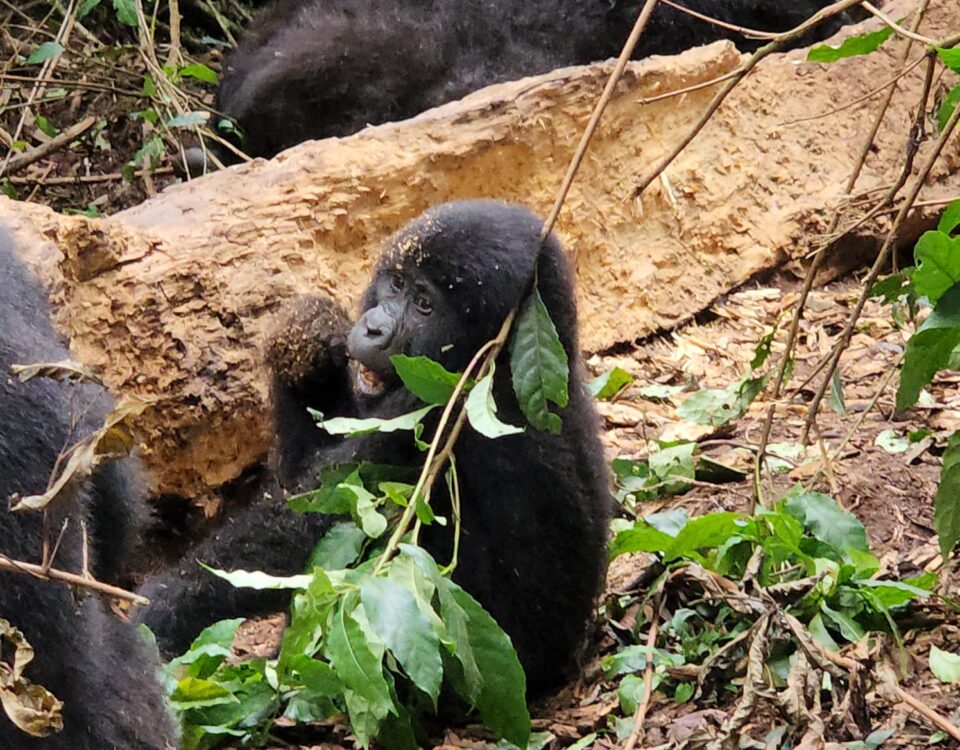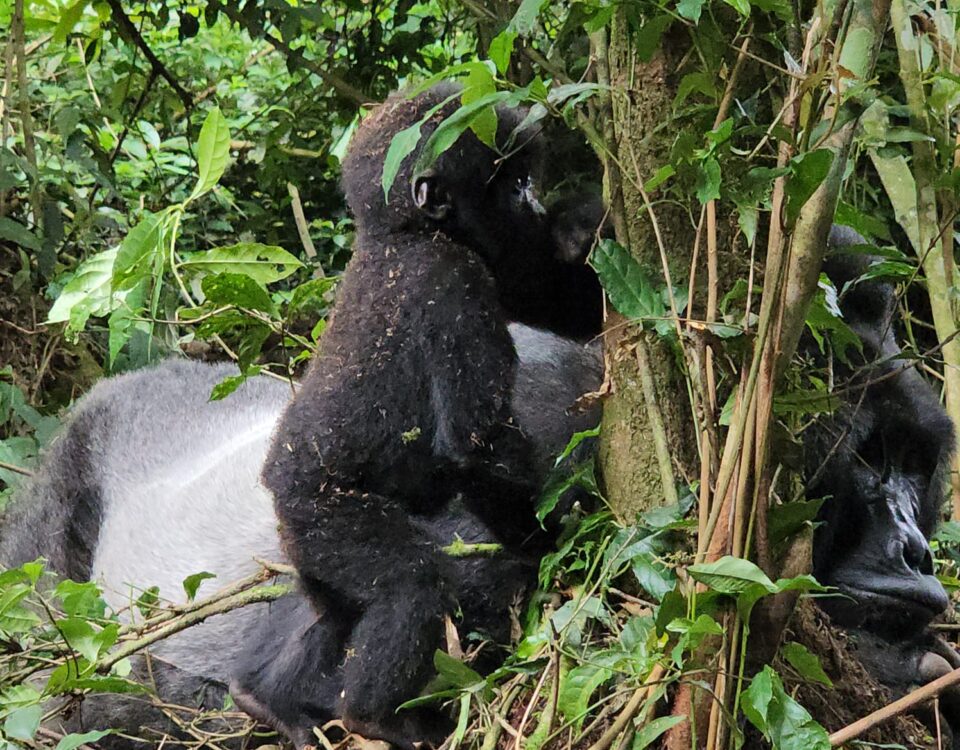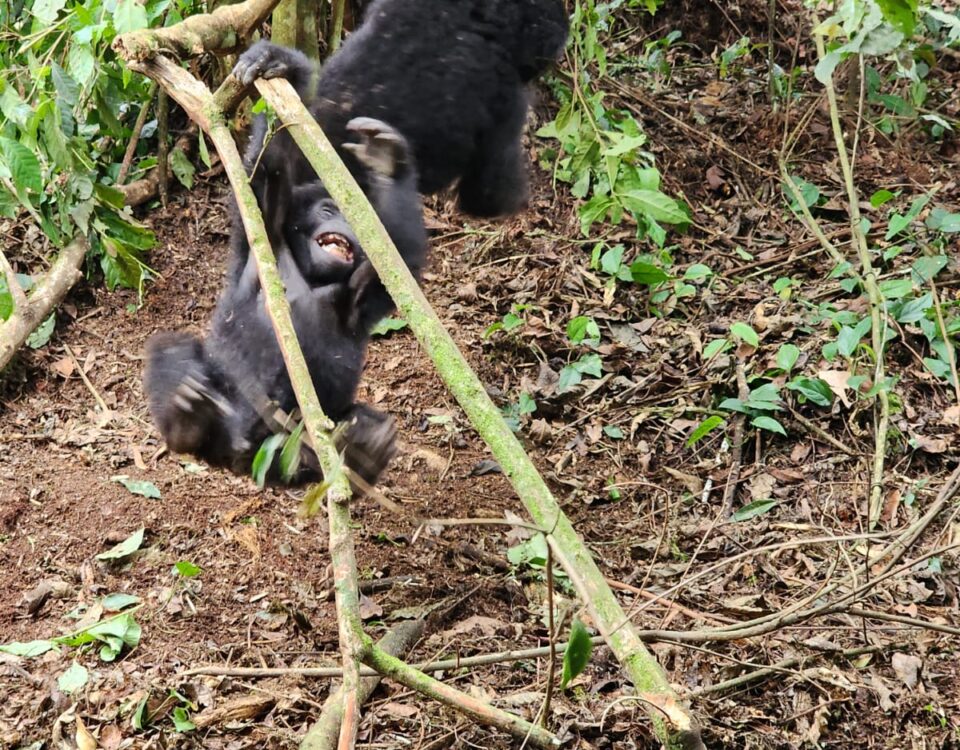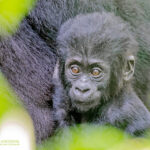
How Long Is a Typical Gorilla Trek in Rwanda?
April 1, 2025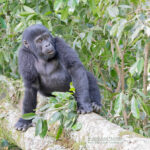
How Many Gorilla Families Can I Visit in Rwanda?
April 1, 2025Is Gorilla Trekking in Rwanda Safe?
Is Gorilla Trekking in Rwanda Safe? Gorilla trekking in Rwanda offers one of the most awe-inspiring and unique wildlife experiences in the world. Trekking through the dense forests of Volcanoes National Park, visitors get the rare opportunity to encounter mountain gorillas in their natural habitat. These gentle giants are critically endangered, and Rwanda is one of the few places on Earth where you can observe them up close. However, as with any adventure, safety is an important consideration. Many potential trekkers often wonder, Is gorilla trekking in Rwanda safe?
The good news is that gorilla trekking in Rwanda is generally considered to be very safe, but like any adventure in the wilderness, there are some risks involved. The safety of trekkers is a top priority for the authorities, and numerous measures are in place to ensure both the well-being of visitors and the protection of the gorillas. In this article, we will discuss the safety aspects of gorilla trekking in Rwanda, addressing common concerns and highlighting the precautions that are taken to make your experience as safe and enjoyable as possible.
Best Uganda Rwanda Safari Packages
What Makes Gorilla Trekking in Rwanda Safe?
- Strict Regulations and Guidelines
One of the main factors that make gorilla trekking in Rwanda safe is the strict set of rules and regulations set by the Rwanda Development Board (RDB). These rules are designed to ensure the safety of trekkers, the gorillas, and the environment. Before heading into the forest, trekkers are required to attend a briefing, where park rangers explain the guidelines to follow during the trek. Some of the key rules include:
- Maintaining a safe distance: Trekkers are required to stay at least 7 meters (about 23 feet) away from the gorillas. This reduces the risk of transmitting diseases to the gorillas and ensures that the animals remain undisturbed in their natural habitat.
- Limited group sizes: Each trekking group is capped at 8 people per gorilla family, reducing the environmental impact and ensuring that the gorillas are not overwhelmed by a large group of visitors.
- One hour with the gorillas: Trekkers are only allowed to spend one hour with the gorillas, which limits the risk of disturbing them and ensures that they are not stressed by prolonged interactions.
- No feeding or interacting with the gorillas: Visitors are prohibited from feeding or attempting to touch the gorillas, which helps prevent any potential aggression or injury.
- Experienced Guides and Rangers
The safety of trekkers is further ensured by the presence of highly trained guides and rangers. These professionals are skilled in tracking the gorillas and handling the unpredictable nature of the forest. Rangers have in-depth knowledge of the gorillas’ behavior and habitat, which allows them to guide visitors safely through the forest.
In addition to the guides, there are also armed rangers who accompany trekking groups. The presence of armed rangers adds an extra layer of security. However, it’s important to note that the primary role of the armed rangers is to protect both the trekkers and the gorillas, as wild animals can sometimes present unexpected risks. They are not there to engage with the gorillas but are trained to handle any emergencies should they arise, ensuring that you can enjoy the experience with peace of mind.
- Medical Support and Emergency Protocols
While the likelihood of a medical emergency during a gorilla trek is low, there are safety protocols in place to handle such situations. Rwanda has a well-developed healthcare infrastructure, and emergency evacuation procedures are available if needed. Trekking groups are always accompanied by a guide who is trained in first aid. In the rare event of an injury or other medical issues, the guide can call for assistance, and rangers are equipped with walkie-talkies to communicate with the park headquarters.
Is Gorilla Trekking Physically Demanding?
While gorilla trekking in Rwanda is generally safe, it can be physically challenging, especially for those who are not accustomed to hiking in rugged terrain. The forest trails can be steep, muddy, and slippery, with occasional rain showers making the conditions even more challenging. Trekkers often have to navigate volcanic slopes, dense vegetation, and sometimes long distances to reach the gorillas.
Before booking a trek, it’s important to assess your physical fitness. If you are in good health and have some experience with hiking or outdoor activities, you will likely find the trek to be manageable. For those who are concerned about the physical demands, it is recommended to choose a trek that matches your fitness level. The park rangers and guides will always assess the fitness level of the group before assigning a gorilla family to track. In some cases, they may adjust the difficulty of the trek to accommodate everyone.
What About the Risk of Disease?
One of the primary concerns for many trekkers is the risk of transmitting diseases to the gorillas. Gorillas are highly susceptible to human diseases like the flu, colds, and respiratory infections, which can be fatal to them. To protect the gorillas, strict health regulations are in place for all visitors. These include:
- Health screening: Before trekking, you will undergo a health screening. If you are sick with any contagious disease, you will not be allowed to go on the trek.
- Face masks: Trekkers are required to wear face masks during the trek to minimize the risk of passing on any diseases through respiratory droplets.
- Hand sanitizing: Visitors must sanitize their hands before and after the trek, and hand sanitizers are provided by the park.
These measures help protect the gorillas from human diseases, and compliance is monitored by the rangers. By following these safety protocols, the risk of disease transmission is minimized, making gorilla trekking a safe activity for both humans and gorillas.
Other Safety Concerns
While the gorillas themselves are generally peaceful, they are wild animals, and as with any wildlife encounter, there is always a small degree of unpredictability. However, gorillas are mostly gentle and shy animals, and they rarely pose a threat to trekkers. The only instances where gorillas may show signs of aggression are usually in self-defense or to protect their group.
If you follow the guidelines provided by the park rangers and maintain a safe distance, the risk of encountering aggressive behavior from the gorillas is very low. The rangers and guides are trained to recognize and manage these situations, ensuring that trekkers are kept safe at all times.
Another important consideration is the terrain. As mentioned earlier, the park is located in a volcanic region, and the terrain can be steep and challenging. It’s important to be aware of the physical demands of the trek, especially for those with mobility issues or health concerns. Always listen to the advice of the guides, and don’t hesitate to ask for help if needed.
Conclusion: Safe and Unforgettable Adventures
In conclusion, gorilla trekking in Rwanda is a safe and well-regulated activity, provided that you follow the guidelines and safety measures put in place by the authorities. The combination of experienced guides, well-trained rangers, and strict regulations ensures that trekkers can enjoy a safe and memorable experience. While the trek itself can be physically demanding, the rewards are more than worth the effort.
Gorilla trekking is an opportunity to connect with one of the world’s most endangered species in a stunning natural environment. By following the guidelines and respecting the gorillas and their habitat, you’ll not only be ensuring your own safety but also contributing to the conservation of these magnificent animals. So, if you’re ready for an adventure of a lifetime, rest assured that gorilla trekking in Rwanda is a safe and rewarding experience.

